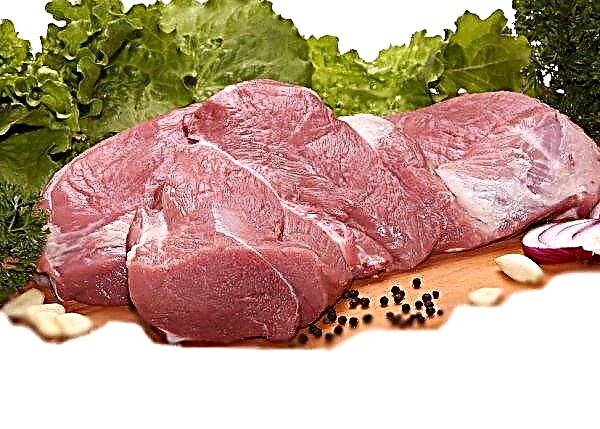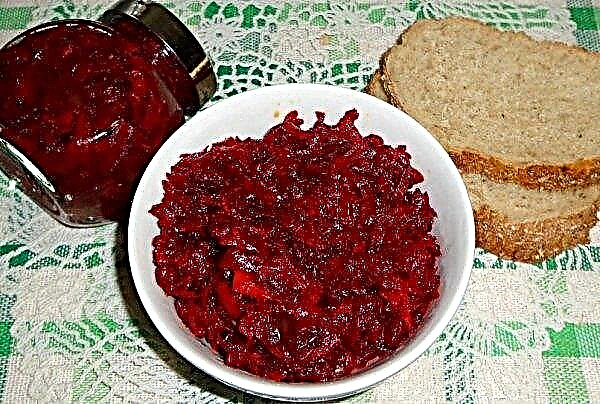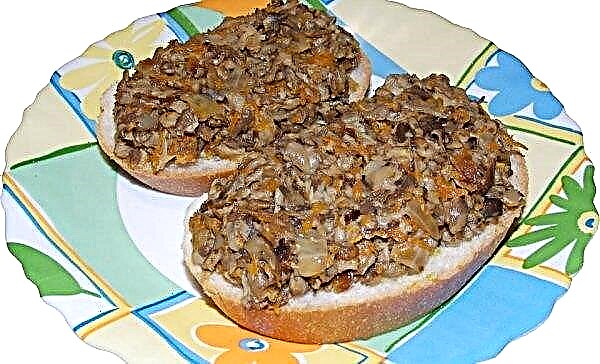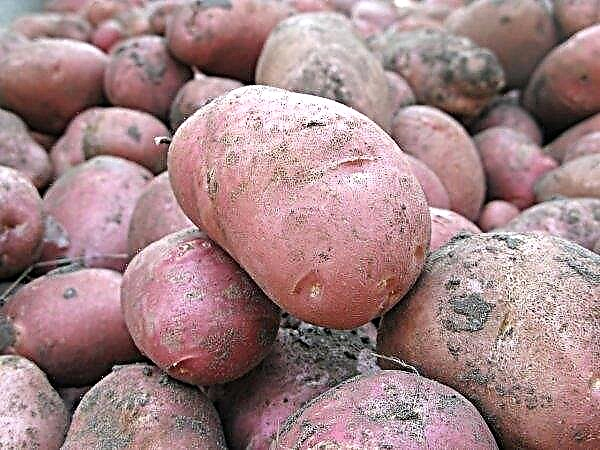There is a great opportunity to save money - to make an incubator yourself. It is not as difficult as it seems at first glance. From the article you will learn about the features of creating an incubator from available materials, what are the requirements for this process, and how to choose the right eggs for laying.
Description and types of homemade incubators
Incubators make different sizes according to the number of eggs that are used when laying. The role and location of the device plays a role. But even the simplest incubator should be equipped with a thermometer for fixing the microclimate, ventilation, egg trays.
Did you know? The daily chicken has the same skills and reflexes as a 3-year-old child.
Pros
- Among the advantages of such "hens" experienced poultry breeders call:
- saving in energy consumption;
- reliability;
- the ability to lay large volumes of eggs;
- universality (equally suitable for all types of birds);
- microclimate suitable for chick survival.

Minuses
- A home incubator has certain disadvantages:
- when creating it, it is important to take into account the requirements for such devices, otherwise the result will not be achieved;
- the appearance of such a device is often inferior to purchased;
- if you are assembling the incubator for the first time, then there is a chance of making a mistake when assembling it.
For example, before starting the assembly of the device, it is necessary to provide for every little thing. It is possible to eliminate some of the shortcomings, since it is in the strength of everyone who is going to create an incubator. Then you can not think about buying a purchase.
Homemade device requirements
In order for a design to be able to carry out its functions effectively, it must meet the following requirements:
- temperature. When collecting an incubator, remember that it will have to maintain a microclimate at + 37 ° C ... 39 ° C;
- humidity. During the entire period of the eggs in the device, this parameter will need to be changed according to the phase of the process;
- ventilation. The appliance must have a fan so that a constant flow of air contributes to the optimal ratio between heat and humidity.
Important! It is the complex of these three components that provides the eggs with the same conditions as under the hen’s wing.
General manufacturing rules
Today, home incubators are made from a wide variety of materials and devices (there are examples of such devices made even from a microwave).
However, their manufacture must always comply with a number of general rules:
- work is only necessary with dry, clean materials;
- When covering the frame, make sure that there are no gaps or holes for heat leakage (if necessary, use sealant);
- at the planning stage, think about where to place the container with water to maintain humidity in the device;
- it is important to remember about heating: to ensure it, several lamps of 25 W are used, one of which should be fixed at the bottom for uniform distribution of heat;
- do not forget to make several holes for exhaust ventilation;
- Be sure to place a thermometer and a viewing window with a bulb (for example, 12 volts) on the lid to monitor the situation inside the incubator.
Did you know? At pThere are many functions in the chicken herd: it encourages chickens to eat, protects them from small predators, and prevents conflict between birds.
How to make an egg incubator yourself
Now in more detail about how to make a home-made device for incubating chickens and other birds.
To assemble the device, you will need diagrams and drawings with dimensions, as well as a set of tools and various materials from which you plan to create an incubator.
Auto flip
If there is no desire to independently assemble a mechanism for an automatic flip (as described in the example above), then you can buy a ready-made design: it is fixed in any home-made device.

The operating principle of the automatic flipping mechanism is simple and effective. It not only performs the functions of a hen, but also allows you to maintain the temperature inside the device, because the lid opens less often. Having such equipment, you do not have to worry about having time to turn over the eggs in the device in a timely manner.
From the fridge
An equally popular option for a homemade incubator is the manufacture of those from idle refrigerators. To do this, you can use both two-chamber and industrial devices, because their design provides for careful preservation of temperature (which is extremely important for the incubator).

In addition to the refrigerator, to create a device you will need:
- cardboard box;
- wooden blocks to create a frame;
- incandescent bulbs (based on 4 pcs. per 100 eggs);
- egg trays (wooden, plastic, metal);
- fan;
- thermometer;
- temperature regulator;
- gear motor;
- bearings with clamps;
- hygrometer (it is designed to measure humidity, so if there is such a function in the thermostat, you can do without a separate device).
It is worth preparing a number of tools for work:
- jigsaw;
- pliers;
- knife;
- electrical tape.
Assembling a device from an idle refrigerator involves several steps:
- First, drill holes from above - for light bulbs and ventilation.
- For the same purpose, 3-4 openings with a diameter of up to 1.5 cm are made in the lower part of the refrigerator door.
- Using cardboard, the walls of the device are insulated.
- At the bottom of the structure, a container with liquid is installed to maintain moisture in the device.
- Fasten and connect the fan to electricity. The optimal speed for him is 5 m / s. Just do not direct the air flow to the trays, otherwise the eggs may deteriorate.
- Insert wires for incandescent lamps into the holes made from above and fix the heaters.
- It is necessary to equip the incubator with temperature regulators. In such a large device, 3 types are usually used: a bimetallic plate (closes electricity when a certain level of heating is reached), an electric contactor (it turns off heating at a given temperature) and a barometric sensor (closes a circuit at excessive pressure).
- Take care of the mechanism for rotating the eggs. In nature, the brood hen turns them 3-4 times a day, which means that the incubator must also have a special design. For it, install a gearbox at the bottom.
- From above, place the wooden frame for the trays so that they move 60 ° forward and backward.
- The gearbox with trays are connected by a rod.
Video: How to make an incubator for eggs from the refrigerator
Foam
Polyfoam (or expanded polystyrene) is considered one of the most cost-effective and suitable materials for creating a home incubator. It holds heat very well, has low weight and is easy to use.
Did you know? The baby chick needs oxygen already on the 6th day of incubation.
To make a foam incubator, you will need such materials:
- 2 sheets of polystyrene (foam);
- a sheet of transparent plastic for the window;
- 4-5 lamps and cartridges for them;
- temperature regulator;
- glue;
- trays (quantity - depending on wishes).

Also prepare the tools:
- stationery knife / scissors for cutting foam;
- soldering iron;
- corner and ruler.
Getting to the assembly of the device:
- Cut the sheet into 4 identical parts, measuring everything with a ruler / square: these will be the sides of the case.
- Glue them. This is the frame of the future design.
- The sheet should be divided into 2 equal parts, one of which is additionally cut into pieces 60 cm wide (device cover) and 40 cm (its bottom).
- The lower layer is glued to the finished frame. Tighten the entire structure with tape to give it rigidity.
- Cut a 12 x 12 cm square at the top. Close it with plastic: this will be the window and ventilation of our incubator.
Important! Some amateur poultry farmers also mount a fan in the incubator to better circulate air. Only the air flow from it should be directed to the lamps, not the eggs: from this they dry up.
- From the polystyrene residues, cut out 2 beams 6 cm high and 4 cm wide, then glue them to the bottom along the long sides (these will be the legs on which you will place the egg trays).
- On 40-centimeter walls, make 3 holes (1-2 cm in diameter) at the same distance at a level of 1 cm from the bottom.
- So that the material does not pour, it is necessary to burn the edges with a soldering iron.
- We mount the roof. To hold it firmly on the frame, thin (for example, 2 x 2 cm) foam boards should be attached to it from within at a distance of 5 cm from the edge.
- Having finished with the design, it's time to do its internal arrangement: mount the lampholders for lamps in an arbitrary order (as you wish).
- Fasten the thermostat 1 cm above the tray. It is not difficult to choose it - just focus on the number of eggs in the planned tab. Today, there are devices on sale that can control devices for 20 eggs, 30 eggs, 1000 eggs. If possible, it is necessary to choose thermostats that simultaneously measure temperature and humidity.
- Put the trays. Between them and the side walls you need a gap of at least 4-5 cm, otherwise there will be no good ventilation.
Video: DIY foam incubator
Egg laying in the incubator
After collecting the incubator, you can proceed with the selection of eggs for laying. Not all of them are suitable for breeding birds.
Therefore, it is important to know how to choose the right ones:
- pay attention to the shell: it should be without cracks, dents, tubercles or marble color;
- enlighten the eggs on the lamp and leave those of them that have a clearly visible formed yolk on a transparent background without extra patches and spots. When the egg flips, it should move slightly;
- Choose larger, regular eggs.
Important! If you plan to place eggs of various species (chickens, geese, ducks) in one tab, then use trays at different levels for this. Each bird has its own requirements for timing, temperature, and it is important to adhere to them for a successful result.
But it is important not only to choose the right planting material, but also to prepare them for bookmarking:
- eggs must be stored in a cool place for no more than 7 days;
- immediately before laying, you need to transfer them to a room with room temperature for 8-12 hours (otherwise condensation will form on them in a warm incubator, and this can lead to the development of mold and death of the embryo);
- There are no exact recommendations for laying eggs in trays: place them vertically, horizontally. As for larger specimens, they can be placed with the pointed end down or even at an angle. Although most experienced poultry farmers argue that when placed horizontally, eggs warm better.

After laying eggs, periodically check their quality. Already on the 6-7th day after the start of the process, it is worth enlightening them through the lamp: the blood vessels in the protein and the dark embryo should already be visible.
Temperature conditions for different types of birds
Temperature is an essential condition for hatching eggs. Lack of heat slows down the growth of embryos, and prolonged hypothermia leads to death. Overheating can lead to the same consequences. If the embryos survive, the parts of the body and organs will be deformed in the chicks as a result.
We recommend to learn more.

Different types of birds have their own parameters for a suitable microclimate:
- for chickens, it is first worth keeping the level + 38 ° C- + 39 ° C, eventually dropping to + 37.6 ° C;
- ducklings will feel better at + 37.8 ° C with a gradual decrease to + 37.1 ° C;
- goose eggs require at least + 38.4 ° C, and closer to the end of the incubation, you can lower the temperature values to + 37.4 ° C;
- for turkey, the fluctuations are lower: in the first days, it is worth warming to + 37.6 ° C, gradually lowering the level to + 37.1 ° C;
- quails love the same temperature (+ 37.5 ° C) throughout the entire incubation process.
Did you know? Hens cackle for a reason: they constantly exchange information about what is happening around, including their own well-being.
So, making an incubator with your own hands is not so difficult and expensive. But you can create a device that is ideally suited to your conditions in terms of size, number of eggs for incubation. Before assembly, carefully study the rules and sanitary standards for such devices, otherwise the success of the enterprise will be in doubt.












